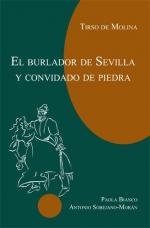|
This section contains 3,304 words (approx. 12 pages at 300 words per page) |

|
SOURCE: “Hell or Heaven? Providence and Don Juan,” in Renascence, Vol. XXXVII, No. 4, Summer, 1985, pp. 212-19.
In the following essay, Howe compares de Molina's The Trickster of Seville and the Stone Guest to Zorilla's Don Juan Tenorio, concluding that although the Don Juan plays have very different endings, Don Juan receives the proper punishment in both.
In Spanish theater, a reversal of the protagonists' expectations marks the two principal plays which feature Don Juan Tenorio as the hero. In the seventeenth-century version by Tirso de Molina, The Trickster of Seville and the Stone Guest, Don Juan pursues his anarchic pleasures confident that salvation is only a deathbed confession away. He acts with impunity throughout the play, ignores the repeated admonitions of others, and ultimately finds damnation rather than salvation in the final apotheosis. On the other hand, in the nineteenth-century Romantic version by José de Zorrilla, Don Juan...
|
This section contains 3,304 words (approx. 12 pages at 300 words per page) |

|


